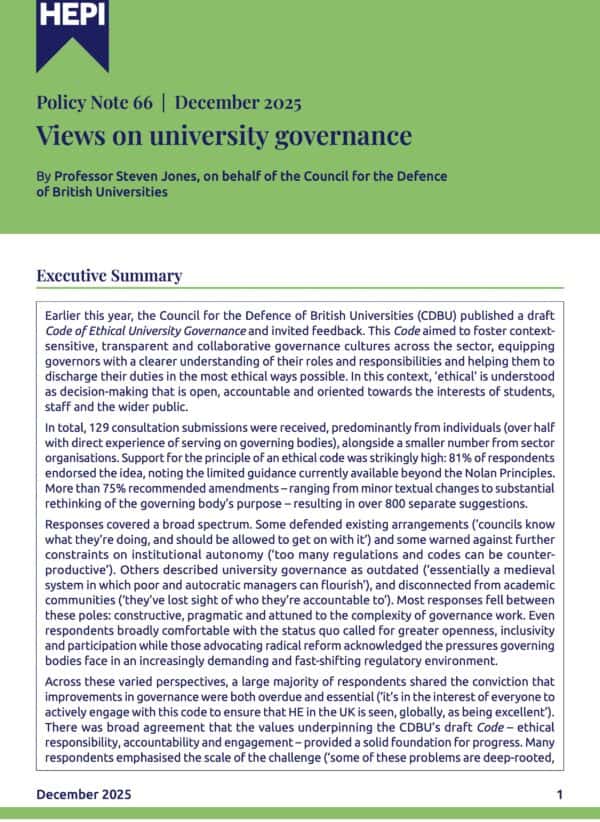Are universities too safe in their vice-chancellor recruitment?
By Tessa Harrison, Partner in the Education Practice at GatenbySanderson.
- You can register now for a webinar discussing the findings of the HEPI/GatenbySanderson Policy Note, Who leads our universities? Inside the recruitment of vice-chancellors, at this link – it will take place from 2 to 3pm, Wednesday 2nd July.
Following publication of our joint GS/HEPI reporting into vice-chancellor recruitment and a vibrant LinkedIn debate, the complex dynamics shaping leadership in the sector have been brought to light. The conversation reveals a sector at a crossroads, wrestling with tradition and transformation.
Insider vs. Outsider: Who Should Lead?
Should vice-chancellors come from within academia or be recruited from other sectors? Out-of-sector candidates can bring a fresh perspective on leading change and challenging the status quo. Inside sector candidates offer deep cultural understanding, academic credibility, and governance experience. Many argue for a hybrid model and leaders who can bridge both worlds.
The CEO-ification of the VC Role
Today’s vice-chancellors are expected to be more than academic figureheads. They must be visionary strategists, financially astute operators, and empathetic people leaders. But, much more is needed to nurture leadership development pipelines with, perhaps, a reappraisal required of the very many leadership development programmes that exist already.
Diversity and Inclusion: Still a Distant Goal
Leadership in higher education remains homogenous. There remains a pressing need to broaden the pool, not just in terms of gender and ethnicity, but also professional and disciplinary backgrounds. Scepticism, especially in research-intensive institutions, about whether university leaders without academic credibility should lead universities persists. Valuing potential over pedigree could unlock untapped leadership talent.
Culture, Metrics, and Mission
Effective leadership in universities demands cultural intelligence and emotional literacy. Metrics like rankings and KPIs, while useful, often fail to capture the true impact of leadership. A more holistic, context-specific approach is needed; one that honours the civic and educational purpose of universities.
Collective Leadership and Cross-Sector Learning
Leadership should not and cannot rest on one individual. Distributed models featuring diverse senior teams and strategic co-leads are gaining traction. Embracing mobility between academia and industry can enrich leadership with fresh insights and mutual respect.
Join the Conversation: Upcoming Webinar
These themes and more will be explored in our upcoming webinar. Whether you’re an academic, policymaker, or sector professional, this is your chance to engage with thought leaders and shape the future of higher education leadership.







Comments
Add comment